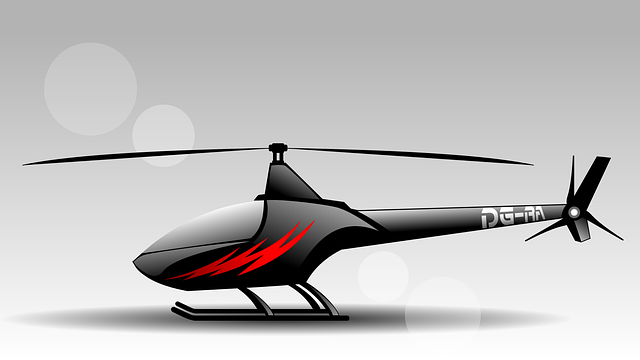Urban flyovers are evolving into scenic marvels, like the Burj Khalifa Helicopter Ride in Dubai, offering unique perspectives on city landscapes. These engineering achievements not only enhance cities' aesthetic appeal but also foster deeper connections between residents and their urban environments. Inspired by nature, they blend functionality with aesthetics, boosting tourism and local economies while becoming iconic symbols of modern cities.
Scenic urban flyovers are transforming city landscapes, offering breathtaking views and a unique perspective on metropolitan areas. This article delves into the world of these engineering marvels, exploring their design, impact, and global implementations. From the iconic Burj Khalifa Helicopter Ride in Dubai to other successful examples worldwide, these structures enhance urban experiences, attracting visitors and locals alike. Discover how carefully planned flyovers can revolutionize cityscapes while providing both aesthetic and functional benefits.
- Understanding Urban Flyovers: A New Perspective on Cityscapes
- The Burj Khalifa Helicopter Ride: A Unique Experience in Dubai
- Engineering Marvels: Designing Scenic Urban Flyovers
- Impact and Benefits: How These Flyovers Transform Urban Areas
- Global Examples: Successful Implementations Around the World
Understanding Urban Flyovers: A New Perspective on Cityscapes

Urban flyovers, often elevated highways or bridges, have long been integral to city infrastructure, facilitating traffic flow and connecting diverse areas. However, in recent years, there’s a growing trend to transform these functional structures into architectural marvels that offer unique perspectives on urban landscapes. This shift has given rise to what we call “scenic urban flyovers,” which are not just transportation corridors but also artistic expressions of a city’s character.
One notable example is the Burj Khalifa Helicopter Ride in Dubai, where visitors can soar above the iconic skyscraper and experience breathtaking views of the city below. This innovative tourist attraction showcases how urban flyovers can double as platforms for appreciation of a metropolis’ beauty and grandeur from a fresh vantage point. Such developments not only enhance the aesthetic appeal of cities but also encourage people to engage with their surroundings in novel ways, fostering a deeper connection to the urban environment.
The Burj Khalifa Helicopter Ride: A Unique Experience in Dubai

In Dubai, the Burj Khalifa Helicopter Ride offers a unique and thrilling experience that showcases the city’s breathtaking beauty from an unparalleled perspective. This exhilarating journey takes passengers on a flight over the iconic Burj Khalifa, the world’s tallest building, and around the dynamic skyline of Dubai. As you soar above the bustling metropolis, you’ll witness the intricate details of architectural marvels and the vibrant energy of a city that never sleeps.
The helicopter ride provides a once-in-a-lifetime chance to appreciate the vastness and grandeur of Dubai from an aerial vantage point. Passengers can catch glimpses of luxurious skyscrapers, expansive desert landscapes, and man-made islands that contribute to the city’s distinctive tapestry. This immersive experience is not just a tourist attraction but a testament to human ingenuity and the relentless pursuit of pushing boundaries in urban development.
Engineering Marvels: Designing Scenic Urban Flyovers

Scenic urban flyovers, often referred to as elevated highways or bridges, have emerged as engineering marvels that seamlessly blend functionality with aesthetics. These architectural wonders not only ease traffic congestion but also offer breathtaking views of the cities they traverse, transforming everyday commutes into experiences reminiscent of a Burj Khalifa Helicopter Ride Dubai. With careful planning and innovative design, engineers create structures that seem to dance above urban landscapes, showcasing modern engineering prowess.
Designing these flyovers involves a delicate balance between structural integrity, safety standards, and visual appeal. Architects and civil engineers employ cutting-edge technology and sophisticated modeling tools to ensure the seamless integration of materials, forms, and functions. From curved lines that mimic natural flows to intricate lighting designs that illuminate the night sky, every detail contributes to creating iconic landmarks that leave onlookers in awe. The inspiration drawn from nature, such as fluid dynamics and organic shapes, further enhances their beauty, making urban flyovers not just functional passages but also artistic expressions of modern cities.
Impact and Benefits: How These Flyovers Transform Urban Areas

Scenic urban flyovers offer a unique perspective and transform the way we experience cityscapes. One notable example is the Burj Khalifa Helicopter Ride in Dubai, which takes passengers on a breathtaking journey overhead, showcasing the city’s architectural marvels and sprawling landscapes. This innovative approach to urban mobility not only provides efficient transportation but also enhances the overall aesthetic appeal of metropolitan areas.
These flyovers open up new avenues for tourism and leisure activities, drawing visitors eager to capture stunning visuals. They contribute to the local economy by fostering a vibrant atmosphere, encouraging exploration, and promoting urban development. More than just infrastructure, scenic flyovers become iconic symbols, redefining the urban landscape and leaving a lasting impression on residents and visitors alike.
Global Examples: Successful Implementations Around the World

Scenic urban flyovers, while primarily designed for efficient traffic flow, have evolved into architectural marvels that offer breathtaking views of cities around the globe. One notable example is the Burj Khalifa Helicopter Ride in Dubai, where visitors can soar above the world’s tallest building and experience a bird’s-eye view of the city’s stunning skyline. This innovative attraction not only provides a unique perspective of the urban landscape but also showcases the potential of integrating recreational activities with infrastructure design.
Similar successful implementations can be found worldwide, from elevated walkways that double as observation decks to bridges featuring art installations. These projects exemplify how urban flyovers can become iconic landmarks, enhancing both the functionality and aesthetic appeal of metropolitan areas. By embracing such creative solutions, cities can offer residents and visitors alike memorable experiences while navigating their urban environments.
Scenic urban flyovers are not just infrastructure; they’re artistic statements that reshape urban landscapes. From the iconic Burj Khalifa Helicopter Ride in Dubai, which offers a unique perspective of the city’s grandeur, to meticulously designed global examples, these structures enhance tourism and local pride. By integrating aesthetics with functionality, cities worldwide are transforming their skylines into vibrant tapestries, proving that progress and beauty can coexist harmoniously.
